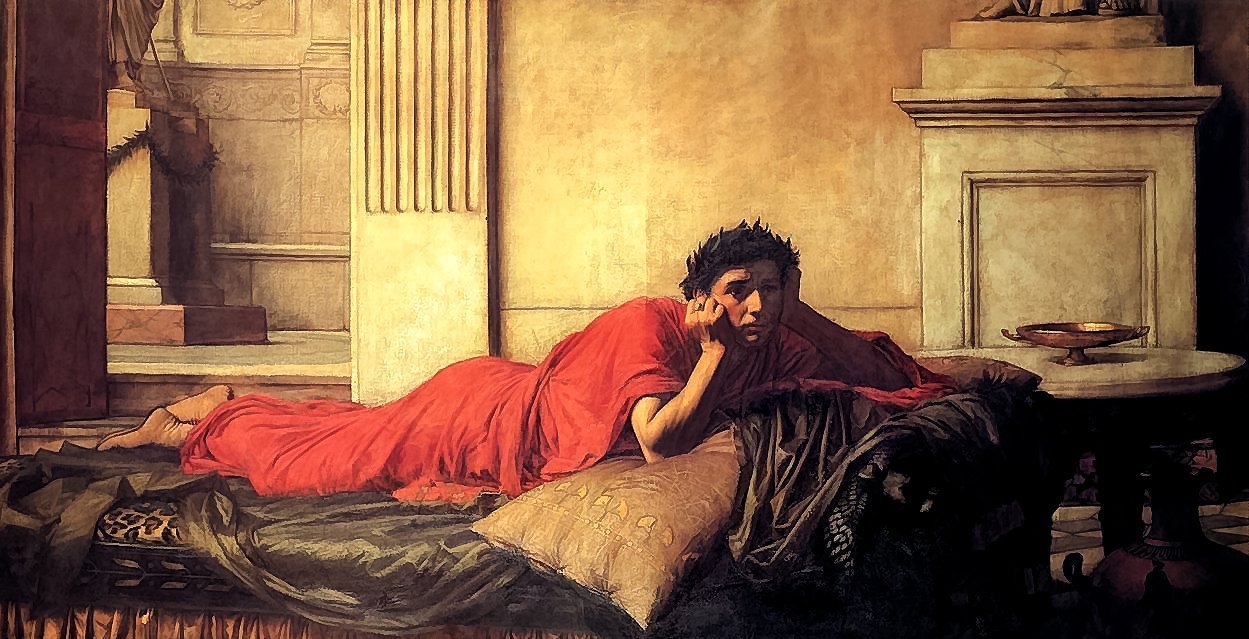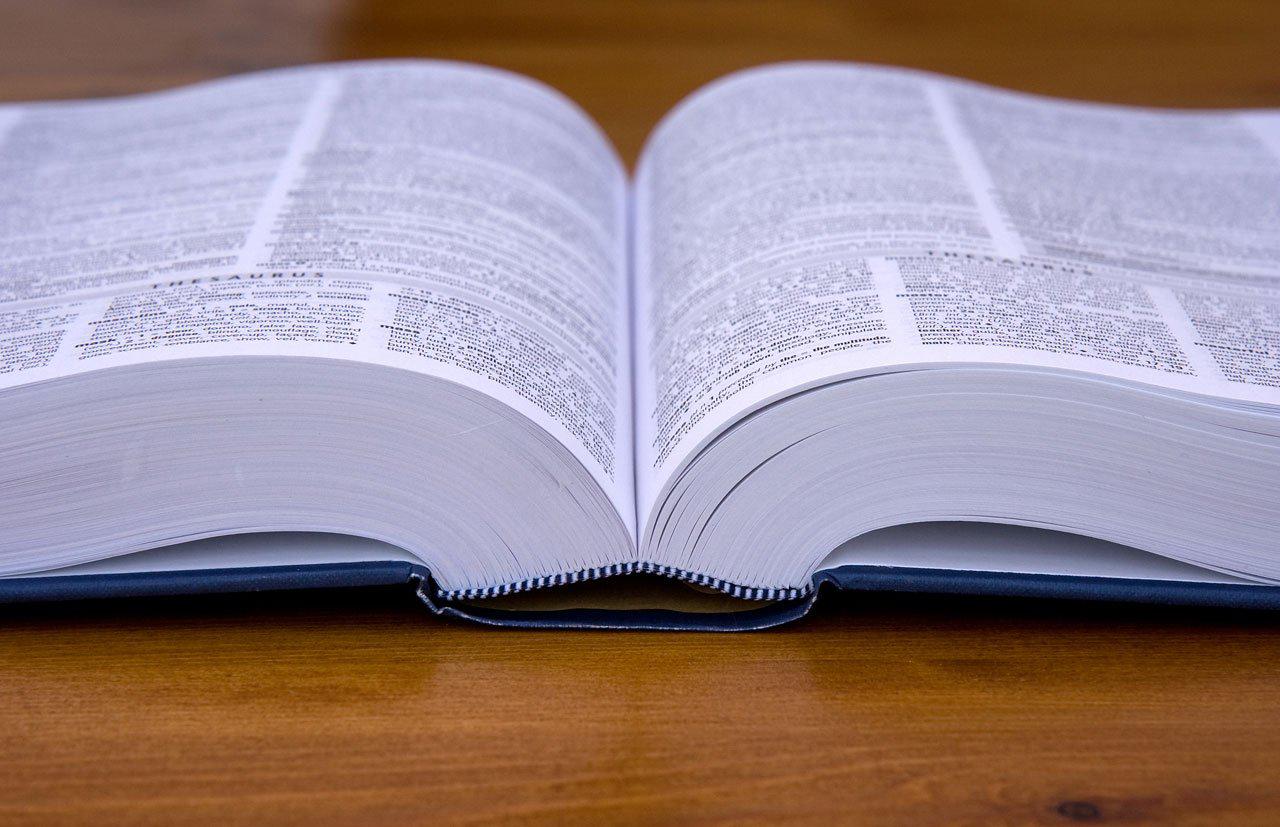The Romance languages: We love to learn them. Even as other languages rise in global significance, French, Spanish, and Italian remain among the most popular foreign tongues for English speakers to acquire.
For many of us, the Romance languages conjure up the best of Europe. We think of Venetian canals and the Eiffel Tower, idyllic wine country and the sunbaked Mediterranean coast, tapas in Cordoba and olive groves in Tuscany. We smell espresso and baguettes, fragrant herbs and rich tomato sauce. We imagine strolling past street musicians and sidewalk cafés.
But even this diversity is only a small part of the story. The Romance languages span the globe, not just Continental Europe—and their history is as colorful, complex, and engrossing as the cultures they represent.
What are the Romance languages? Due to definitional problems, the exact number is disputed. But the most widely spoken are the five major Romance languages of Spanish (538 million speakers globally), French (277 million), Portuguese (252 million), Italian (68 million), and Romanian (25 million), all of which have national language status. They are called Romance languages because they owe their existence to the Romans, who spoke Latin and spread it through most of Europe. All of the Romance languages derive from Vulgar Latin.
There are also a number of regional or subnational Romance languages, including Catalan (9 million speakers), Occitan (perhaps 0.6–2.2 million), and Sardinian (perhaps 1 million). Some, like Catalan, are at the center of fierce nationalist or separatist struggles based on a sense that the speakers share an ethnic and cultural identity distinct from that of the rest of the country. There are many other Romance languages whose status is contested.
This article covers everything you need to know about this diverse, lyrical family of languages—which ones belong in this category, where they are spoken, and how they are different and alike. We also explore the intriguing link between the big-R Romance of the language group and the little-r romance of flowers and mood lighting. There is, in fact, a historical connection!
The Romance Languages Today

Today, the Romance languages represent more than one billion native speakers around the globe, plus millions of nonnative speakers and enthusiasts. Because Romance languages are spoken as a second language in many countries (e.g., French in Morocco or Algeria) or claim pockets of speakers across the world (e.g., Judeo-Spanish speakers in Israel, or Portuguese speakers on the west coast of India), exact figures are hard to come by.
In addition to the eight Romance languages mentioned above, the following could also be added to the list (it all depends on how you define a language—a slippery question, for linguistic and political reasons):
- Sicilian
- Corsican
- Romansh, Friulian, and Ladin (known as the Rhaeto-Romance languages), spoken in parts of southeast Switzerland and northern Italy
- Franco-Provençal dialects, spoken in parts of France and Italy
- Walloon, a French dialect spoken in Belgium
- Piedmontese, spoken in northwest Italy
- Asturian, spoken in northern Spain
- Galician, spoken in northwest Spain
- Haitian Creole and other creole languages
- Dalmatian, once spoken in Croatia but now extinct (the last known speaker, Tuone Udaina, died in 1898)
Even this list is far from exhaustive. Since there is no universally accepted definition of what constitutes a language (versus a dialect, basilect, or other language variant) in the first place, and no precise threshold for how much Latin influence makes a language a Romance language, the boundaries of the group are somewhat hazy.
Nevertheless, the center is firm. Spanish, French, Portuguese, Italian, and Romanian, the most prevalent Romance languages, are identified by their heavily Latinate vocabulary and grammar, giving them a remarkable degree of mutual intelligibility.
In terms of similarity or dissimilarity to the Vulgar Latin from which they sprang—what linguists call “differentiation”—Italian remains the least differentiated; it is also the closest cousin to the other modern Romance languages. French has traveled furthest from Vulgar Latin in terms of pronunciation, while Romanian has changed the most in terms of vocabulary. Interestingly, though, when we go back to the literary heyday of Rome, we find that Romanian has preserved Classical Latin grammar more faithfully than the other Romance languages. (Check out this video featuring Ancient Language Institute Professor Luke Ranieri, as he and other Latin speakers converse with a native Romanian speaker.)
Why do people often find the Romance languages to be especially melodic and sweet? There are at least two features that might contribute to this perception.
First, compared to the Germanic languages—English, German, and Dutch being the main ones—the Romance languages tend to use vowels more frequently relative to consonants. And unlike English vowels, which often change when combined (what we call diphthongs—“ai,” “ou,” etc.) or based on their location in a word or sentence (e.g., the o’s in “contort”), vowels generally remain constant in Romance languages regardless of location (we call these monophthongs). So, while the a’s and e’s change willy-nilly in the English phrase “a trip to the beach,” in the Spanish equivalent, un viaje a la playa, they are articulated fully and predictably.
Second, patterns of stress and intonation probably make the Romance languages more attractive to our ears. Whereas English prefers to place the accent on the first or middle syllable of a word (e.g., agony, exercise, reprimand, intolerable), the Romance languages prefer to place it on the last or penultimate syllable. To see how this works in action, compare Latin-derived English words with their Romance cognates and notice how the stress shifts. From English to Italian, for instance, “illustrated” becomes illustrada, and “intention” becomes intenzione. This gives Romance languages a smooth and rolling, even musical, effect.
Still, there is great variation from language to language. While Spanish is spoken with a comparatively narrow pitch range, Italian rises and falls over a wide scale, lending it the singsong quality that nonnative speakers often find so enchanting. Diversity within languages also makes it hard to generalize. Argentine Spanish sounds markedly different from the Spanish in Spain, and both sound different from Mexican Spanish.
Furthermore, not everyone finds Romance languages irresistibly charming. Although French is popularly known as the language of love, its nasal vowel vocalization and guttural r come across as grating to some hearers. Conversely, German, which is sometimes stereotyped as a harsh language, often surprises foreigners by sounding pleasantly mild and controlled.
In fact, the great bard of Argentina, Jorge Luis Borges, preferred English to his native Spanish, in part because of where the stress usually falls in the two languages.
“In Spanish, words are far too cumbersome. They’re far too long,” Borges once said in a 1977 interview on Firing Line with William F. Buckley.
“For example, if you take an English adverb, or two English adverbs, you say for instance, ‘quickly,’ ‘slowly,’ then the stress falls on the significant part of the word… But if you say it in Spanish, you say ‘lentamente,’ ‘rapidamente.’ And then the stress falls on the non-significant part of the word.”
In other words, whether or not a language is beautiful is a subjective determination—and in the case of the Romance languages, it may have more to do with the way they evoke the elegance of Old Europe.
But today, the Romance languages are at home far beyond Europe. The vast majority of Spanish speakers live in Latin America, not Spain. There are more French speakers in West and Sub-Saharan Africa than in France. And Brazil boasts about 20 times as many Portuguese speakers as Portugal!
While Europe is facing population decline, Francophone Africa and Latin America are set to keep growing rapidly for the next few decades. Add to this the fact that Spanish and French are two of the three official United Nations languages, and you can see why the Romance languages will be globally relevant for a long time to come. One writer (albeit a proud Frenchman) even argued in Forbes that the language of the future will not be English, Spanish, Arabic or even Chinese—but French!
From Latin to the Romance Languages

How did Latin birth so many distinct yet closely related tongues? The story of the Romance languages is full of twists and turns, and a bit of conjecture due to blanks in the linguistic record. We know scarcely anything about pre-Latin tongues in the areas where the Romance languages are now spoken. However, we do know a central piece of the plot: the history of the Roman Empire.
Rome reached the height of its territorial expansion in AD 117. From its seat of power in modern-day Italy, the Empire stretched all the way to Britain in the far north, covered modern-day Spain in the west, claimed a long strip of North Africa from Morocco to Egypt to the south, and extended as far as Turkey and the Levant to the east. The Roman navy dominated the Mediterranean. Despite periodic revolts in the provinces and crises of succession in the capital, Roman rule brought unprecedented stability to the region, enabling swift travel and flourishing trade. It also brought Latin. Through the Empire’s administrative and military infrastructure, Latin spread and established itself in many parts of Europe.
The Empire itself was less fortunate, gradually breaking apart under the strain of high administrative costs, infighting, and overexpansion. Germanic invaders steadily conquered the western provinces, removing the last Roman emperor in 476. Fortunately for the development of the Romance languages, however, the new rulers adopted Latin and Christianity. Latin remained in use despite the collapse of the Empire and the fragmentation of Europe.
Three hundred years later, a Germanic tribe called the Franks became a major political force on the continent. They were also allied to the Pope in Rome. In 800 the Pope declared the Frankish king, Charlemagne, to be “Emperor of the Romans,” and with the Church’s blessing, Charlemagne reconsolidated much of Europe as a new political unit—the Holy Roman Empire. Charlemagne’s reign would play a crucial part in the story of the Romance languages.
Under Charlemagne and his successors, the Carolingians, Europe experienced sweeping Church reforms and a linguistic revival. By this period, the inhabitants of the former Roman provinces were speaking a variety of quasi-Latin dialects. Latin had remained in administrative use, but formal Latin knowledge had declined. Popular speech had moved on, innovating and branching out from Latin to the point that it was no longer quite the same language.
Charlemagne’s campaign to bolster the use of Latin in the Church and society meant a more rigorous program of Latin education. What this did, in effect, was amplify the distinction between Latin proper, the language of liturgy and scholarship, and the Latinate vernaculars of the region. Since higher standards of Latin were now expected, but most people were not sufficiently well-versed to deploy it for normal functions, there was a popular push to standardize the vernaculars for business and legal usage.
By the twelfth century, oral literature composed in Latinate vernaculars was gaining attention around Europe. The most widely celebrated was the poetry of the French Troubadours (more on them below), which sparked interest in the essential unity of Europe’s languages. The poet Dante wrote an influential treatise on the subject. This provoked a new curiosity about linguistics and a quest for a worthy literary medium based on the language of the people.
These efforts accelerated during the period of European colonialism and the Renaissance. Burgeoning wealth and greater patronage of learning and the arts created an impetus for proper language standards. From the late fifteenth century onward, as the Spanish, Portuguese, and French empires staked their claims to parts of the Americas, the Caribbean, Africa, India, and the Pacific, there was a drive to cultivate a language of prestige—one that would project stateliness and grandeur across the globe.
By the seventeenth and eighteenth centuries, with the other kingdoms waning, French had beaten all competitors as the global medium for intellectual exchange. In an effort to preserve and codify a “pure” form of the language, French grammarians meticulously weeded out non-Latinate words from the lexicon and tried to reinforce Latin-based diction. This influenced the trajectory of the other Romance languages, although French has always been the most carefully cultivated. To this day, the Académie Française publishes an official French dictionary, something that English, for example, does not possess.
But what accounts for the variety of the Romance languages? How did they sprout and diversify from Vulgar Latin—through fusion with the existing local languages, or through regional differences in accent and intonation? Each theory has its merits, but in the end, we can only guess. However, since the Romance languages share grammatical features not found in Vulgar Latin, linguistics posit the existence of “Proto-Romance,” a transitional tongue between Latin and the Romance languages as we know them.
Finally, when exactly did the term “Romance” come to be applied to the Latinate languages? And why do we use it to describe erotic love? Read on.
The Origins of “Romance”
First of all, why do we call these languages the “Romance languages”? Well, the word “Romance” comes from the Vulgar Latin adjective Romanicus, which simply means “in the style of the Romans.” As the gulf between Latin and its linguistic spinoffs widened in Medieval Europe, these offshoots of Latin came to be known collectively as lingua Romanica, or “the Roman tongue.” They were well on the road to becoming languages in their own right, with a distinct grammar and syntax.
However, “romance” also had another meaning: It referred to a specific literary form in the vernacular language (i.e. in one of these Latin-derived dialects). And this is where we get romantic comedies that end with a kiss while fireworks explode in the background.
In the twelfth century, folk minstrels known as Troubadours started composing extraordinarily popular love ballads. The earliest and most widely acclaimed ones came from the region of Provence, in southern France. The Troubadours sang about the sublime nature of a passionate affection for, and fidelity to, a lady—and they sang in the local Latinate dialect of Provençal (and other Occitan dialects).
The Troubadour songs traveled to Italy and then to Spain, gaining an audience among other Romance speakers and generating lively discussion about the origins of European speech (see above). They had a profound effect on altering popular perception of the emerging Romance languages. Previously, Latin had been the sole language of literature in Western Europe. The new tongues came to be seen, however, as suitable vehicles for literary expression, filling the void left by the widespread use of Latin. It was possible to write beautiful poetry in the vernacular.
However, the Troubadour ballads had an even more profound effect on Western notions of love. Their love poems inspired a whole genre of “romances” in other French dialects and Middle English. Some of the most prominent were the Arthurian legends of Chrétien de Troyes, The Romance of the Rose, and Sir Thomas Malory’s Le Morte d’Arthur.
These poetic tales usually feature a knight undertaking a difficult journey or performing daring feats at the behest of a lady. They are full of magical, fantastical elements, quests, and heroism—but above all, a unique ideal of courtly love. The knight always approaches the lady humbly, considering himself unworthy of her affection; he pledges personal loyalty, and will do anything to satisfy her smallest request; and his reverence for her borders on worship. Their relationship is governed by rituals of politeness, grace, service, and obligation. From these stories we get the idea of chivalry, the knightly code.
Paradoxically, although this type of love—what the Troubadours called domnei—had erotic undertones, it was also thought to have a purifying and ennobling effect on the lover. A thirteenth-century Troubadour, Guilhem de Montanhagol, said that “from love comes chastity.” Domnei was supposed to possess the knight completely, compelling him to overcome any obstacle, show courage, and cultivate lifelong devotion. He might never be physically intimate with the lady—in some versions, even hoping for intimacy would be impertinent!—but he was to remain faithful to her as an ideal. This was a radical shift in the conception of male-female relationships.
From our twenty-first-century vantage point, we might not appreciate just how original the Troubadours’ content was. After all, an exclusive relationship characterized by rules of etiquette, tokens, tests, risk-taking, gifts, character improvement, and a burning, inextinguishable passion, where each person “completes” the other—hasn’t this ideal been around since time immemorial? Isn’t this a routine, perhaps even quaint, description of “true love”?
Au contraire! We find nothing like this formulation in Western literature prior to the Troubadours. And after them, we find it everywhere. Today you can spot all these elements in thousands of Hollywood movies and paperbacks. In short, the Troubadours and their literary successors wrote the script that would become our standard template for this kind of relationship—what we call romance.
The Most Romantic Language of All
So is there a connection between the “Romance” of the languages and the “romance” of modern love? Most definitely.
French, Italian, Spanish, and other Latin-based tongues were coming into their own at the same time that passionate Troubadour poetry in the vernacular was circulating. It was the latter, in fact, that sparked animated discussions about the former. Love prompted reflections on linguistics.
Down to the present day, we have never been able to dispel this association between the Romance languages and romantic love. Think about it: How many films have you seen where a romance blossoms in the presence of wine glasses, gondolas, or a thick-accented maître d’? Can you imagine how many marriage proposals have occurred near or atop the Eiffel Tower?
And the Troubadours created such a ripple effect in language and literature that they directly inspired some of our favorite English poets—six centuries later! Blake, Byron, Shelley, Wordsworth, Coleridge, and their peers were known as the Romantics because they drew from the earlier romance tradition.
The Ancient Language Institute exists to aid students in the language learning journey through online instruction, innovative curriculum, and accessible scholarship about the ancient world and its languages. Are you interested in learning an ancient language?




